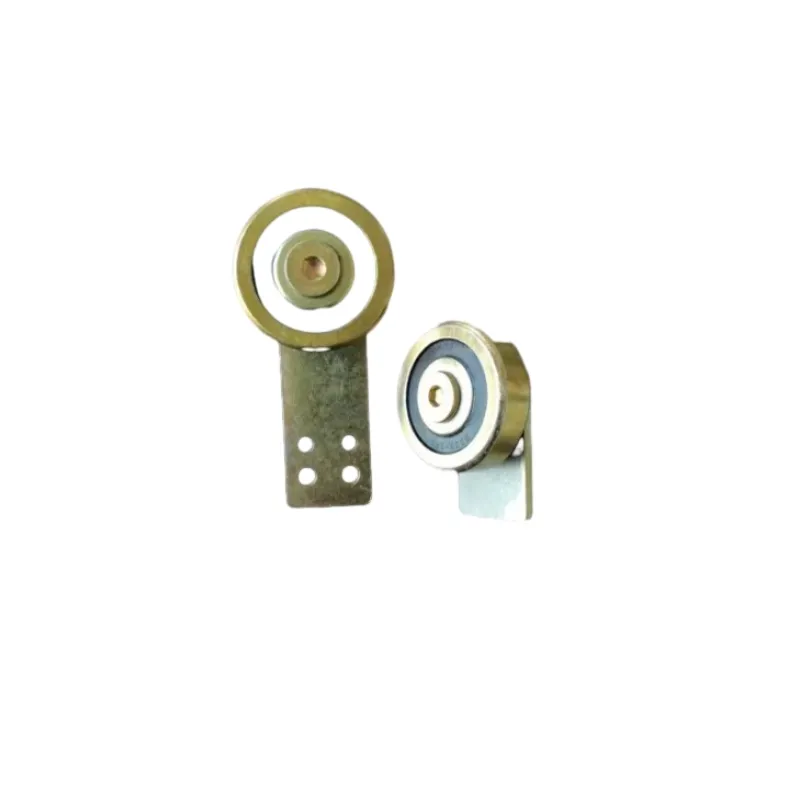
Nov . 18, 2024 06:06 Back to list
Understanding Deep Groove Ball Bearing Naming Conventions and Their Applications
Understanding Deep Groove Ball Bearing Nomenclature
Deep groove ball bearings are among the most commonly used types of rolling bearings. They are characterized by their capability to support radial and axial loads in both directions, making them suitable for various applications. Understanding the nomenclature associated with these bearings is essential for selecting the right type for specific applications. This article explores the terminology and specifications that define deep groove ball bearings.
Basic Structure of Deep Groove Ball Bearings
Deep groove ball bearings consist of an inner ring, an outer ring, a set of balls, and a cage. The inner ring is mounted on a shaft, while the outer ring is fitted into the housing. The balls roll between these rings, facilitating smooth rotational motion. The 'deep groove' design refers to the deeper raceway than standard ball bearings, which allows for higher load-carrying capacity.
Nomenclature Breakdown
The nomenclature for deep groove ball bearings typically includes a combination of letters and numbers, which indicate various features of the bearing. Here are some key components of the nomenclature system
1. Bearing Type The type of bearing is often indicated by a specific prefix letter. For instance, 6200 stands for a series of deep groove ball bearings, with “6” denoting it as a ball bearing, and the numbers following it indicating its size.
deep groove ball bearing nomenclature

2. Dimensions The numbers in the bearing designation provide critical dimensions, particularly the inner diameter (ID), outer diameter (OD), and width. For example, a bearing labeled as 6205 will have an ID of 25 mm, an OD of 52 mm, and a width of 15 mm.
3. Material The material used in the construction of the bearing may also be denoted in the nomenclature. Common materials include stainless steel (suffix “-S”) or ceramic components (suffix “-C”), which can enhance the bearing's performance under specific conditions.
4. Cages The design of the cage, which holds the balls in place, is also a part of the nomenclature. They can be made from different materials such as steel or plastic. Designations may include suffixes such as “-Z” for a metal shield or “-2RS” for rubber seals, indicating a sealed design suitable for environments where contaminants are a concern.
5. Precision and Tolerance Some manufacturers specify the precision level of the bearing in the nomenclature. The precision classes may range from basic (P0) to high precision (P4, P2), indicating the tolerance levels and the amount of run-out permissible.
6. Load Ratings Manufacturers will also typically provide the dynamic and static load ratings, which are crucial for determining the bearing's ability to withstand operational forces. This information is not always included in the nomenclature but is an essential part of product specifications.
Conclusion
Deep groove ball bearings are widely utilized due to their versatility and robustness. Understanding the nomenclature is essential for engineers and technicians selecting bearings for various applications. It allows for a clearer grasp of the specifications, materials, and suitable environments for each type of bearing. By properly interpreting the nomenclature, users can ensure optimal performance and longevity of the bearings in their applications, whether it be in household appliances, automotive components, industrial machinery, or any other equipment relying on rotary motion. Therefore, taking the time to understand the relevant terminology will lead to informed decisions and successful application outcomes.
Latest news
-
Grooved Ball Bearing Design and Functionality
NewsJun.04,2025
-
Concrete Mixer Bearing Load Capacity Testing
NewsJun.04,2025
-
6004 Bearing Dimensions in Robotic Joint Designs
NewsJun.04,2025
-
Advantages of Single-Row Deep Groove Ball Bearings
NewsJun.04,2025
-
Applications of Deep Groove Ball Bearings in Automotive Systems
NewsJun.04,2025
-
Innovations in Bearing Pressing Machine Design
NewsJun.04,2025
